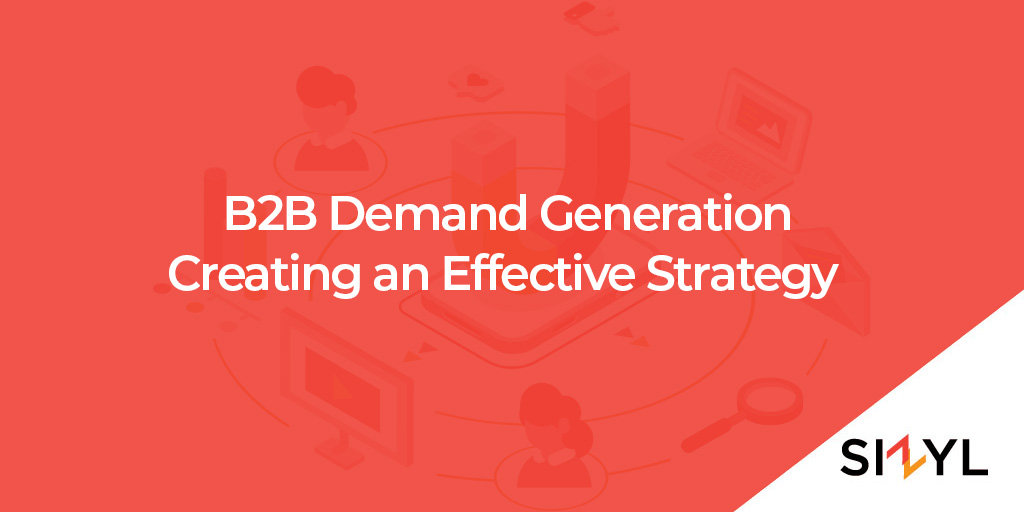Are you looking to develop an effective B2B demand generation strategy that helps your small tech company successfully reach the right audience? Your customers’ digital purchasing journey has radically shifted in recent years, meaning traditional marketing strategies may need to be revised.
Understanding how changing customer behaviors shape B2B demand generation is essential. This blog post will discuss how creating an effective B2B strategy tailored to these modern customer needs can help you create a competitive advantage for your organization.
Know Your Target Audience
Before you begin your b2b demand generation campaign, it is crucial to know your target audience. You need to have a clear understanding of your ideal customer and the people who influence the decision to buy your product or service.
An ideal customer profile should include key industries, geography, decision factors, pain points, and other notable attributes. Test your ideal customer profile against your existing customer base. Do the customers who are easiest to do business with fit your IDC? If not, refine the IDC until it works for your business.
Next, you need to identify the people in those companies that influence the buying decision to do business with your company. Profiling the buying influences in accounts is best done with marketing personas. The goal of marketing personas is to create a profile of the person as accurately as possible and the role influencing the decision. Personas should include demographics, job titles, responsibilities, motivators, pain points, and what they are doing, seeing, saying, hearing, and thinking about daily.
Develop a Compelling Offer
Once you understand your target audience, the next step is to develop a compelling offer. In today’s b2b buying process, 40% to 70% of the journey will occur without speaking to a salesperson. Most of this time, the prospect is self-educating, so offering something educational such as a white paper, research report, ebook, etc., is best. Offers like demos and consultations generally need to be revised, as they put the prospect face-to-face with sales, which they are trying to avoid.
Whatever form you offer the educational material, it needs to connect with the pain points you identified for the target audience. Letting the prospect know you understand their pain and have a solution is always an excellent first step in creating a relationship.
Use Multiple Channels for B2B Demand Generation
It would help if you used multiple marketing channels to reach your target audience effectively with b2b demand generation. These channels could include email, social media, content, PPC advertising, and more. It would be best to have a comprehensive marketing plan for all these channels and ensure your target audience sees your message.
The prospect might not take your offer the first time they see it, but if they start seeing it appear in different channels, they will eventually bite. Marketing is about getting the right message to the right person at the right time, and you increase your odds using multiple channels.
Create High-Quality Content
Content marketing is one of the most critical aspects of B2B demand generation. Creating high-quality content that provides value to your target audience is essential for building trust and credibility. Your content should be well-written, informative, and solve your target audience’s pain points. Use various formats, including blog posts, videos, infographics, etc.
The goal with content is to position your company as a thought leader. Everyone wants to hear and buy from the people leading a market. If the prospect sees you as someone who understands their pain and offers practical solutions, they will trust you. Trust plays a crucial role in winning their business.
Optimize for Search Engines
You might create the best content, but it won’t matter if your audience can’t find it, it won’t matter. Optimizing your website for search is essential in any b2 demand generation strategy, and optimization starts with understanding the words and phrases your audience uses to find solutions like the one you offer.
The next step is to understand the domain authority of your website. The domain authority is how important your website is to the search algorithm. Think of your website as a research paper. It is essential to cite your sources (links to other sites). If other websites are linking to your site, it must be important. This linking is a significant factor in how the search algorithm sees your site. An easy way to check your site’s domain authority is to use Moz’s free tool, found here.
Now that you have the words and know your domain authority, you need to prioritize the words based on value. The value equation considers the likelihood of ranking (your domain authority and keyword difficulty) in relation to the volume of searches for that key phrase. Target the terms you are likely to rank with the highest value.
Finally, create content about the key phrase and optimize the content for search engines to outrank your competitors. Optimizing content includes using relevant keywords in your content, meta descriptions, and titles. You also need to ensure that your website is mobile-friendly, has fast loading times, and is easy to navigate.
Conclusion
B2B demand generation is a complex process that requires careful planning, execution, and optimization. By following the best practices outlined above, you can create an effective demand-generation strategy that helps you outrank your competitors. Remember to focus on your target audience, create high-quality content, use multiple channels, and optimize for search engines. With these strategies in place, you can generate high-quality leads that convert into customers and drive business growth.

